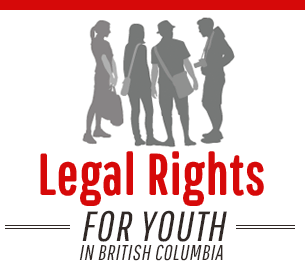If you think you have a legal claim against someone, it can often be settled without going to court or even without filing legal documents. Try writing a letter or talking to the other person about the problem. Or a lawyer or mediator might be able to help you work things out. Lawsuits can be expensive, stressful and time consuming so it’s worth exploring all your options for resolving your disagreement without going to court.
If you do decide to sue someone or if someone is suing you (remember you must have a litigation guardian), it’s useful to understand the terms that are used. These terms include:
- Claimant or petitioner: the person who starts the process, or makes the claim.
- Defendant or respondent: the person on the other side; the person being sued.
- Pleadings: the formal written claims and defences used to start and defend a lawsuit.
- Serving documents: means getting the paperwork to another person, according to the law.
- Style of cause: shows who is suing and who is being sued. For example, Smith v. Jones.
- Damages: includes money for financial loss, property loss, emotional or physical injuries, loss or earnings, or costs of care.
A case gets started when one side files and serves a court document called a Notice of Claim or Notice of Civil Claim (or sometimes a Petition). This document says what that person is suing for and what they want the court to order.
Then the other side can file their own documents (called a Reply or Response) presenting their position.
The first step in a lawsuit involves knowing which court will hear the case. CourtsofBC.ca provides information and videos that describe the three levels of court in BC.
Small Claims Court
Small Claims Court is the place people go if their case involves amounts between $5,001 and $35,000. You have to have a litigation guardian if you are under 19. You can have a lawyer in Small Claims Court, but most of the time, people represent themselves. However, if you are under 19 and your case involves personal injury, you have to have a lawyer.
Small Claims Court is a division of British Columbia’s Provincial Court. It generally costs less and takes less time than going to Supreme Court. A judge alone hears cases in Small Claims Court (there are no juries). Learn more about making a civil claim on SmallClaimsBC.ca. This website has several how-to videos which describe the steps you have to follow and the court forms you need to fill out. The Law Centre website at the University of Victoria contains a series of factsheets about Small Claims Court.
Supreme Court
The Supreme Court of BC is the place where most larger claims are heard, for lawsuits over $35,000. If you have been in a motor vehicle accident, and you are suing for $50,000 or less, then your claim will be dealt with in the Civil Resolution Tribunal (see below).
In this court, a judge or a jury would hear the case. But usually it’s a judge alone. Learn more about civil matters in the Supreme Court at SupremeCourtBC.ca.
Civil Resolutions Tribunal
The Civil Resolution Tribunal (CRT) is an online dispute resolution platform created to help people resolve certain types of disputes quickly. Each dispute must go through mandatory negotiation and mediation phases, where the parties can negotiate with each other. If they still can’t resolve the matter, then they have a “hearing” online or over the phone.
It is a unique tribunal as it deals with many issues that would have otherwise been dealt with in Small Claims Court or Supreme Court. The CRT deals with:
- Small Claims (civil matters) worth under $5,000
- Strata (condo) disputes
- Motor vehicle injury claims up to $50,000
- Societies and cooperative association disputes
While most adults must represent themselves through CRT procedures, if you are under 19 you can be represented by a lawyer or another person who has the authority to settle on your behalf. Click here for more information to the Civil Resolution Tribunal’s website.



